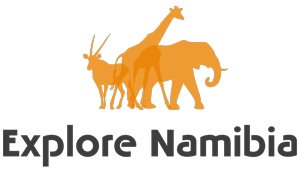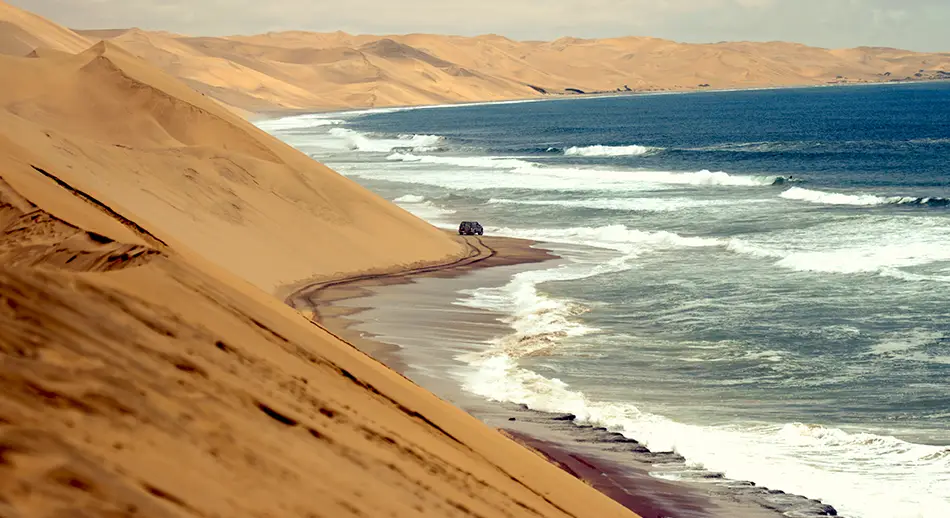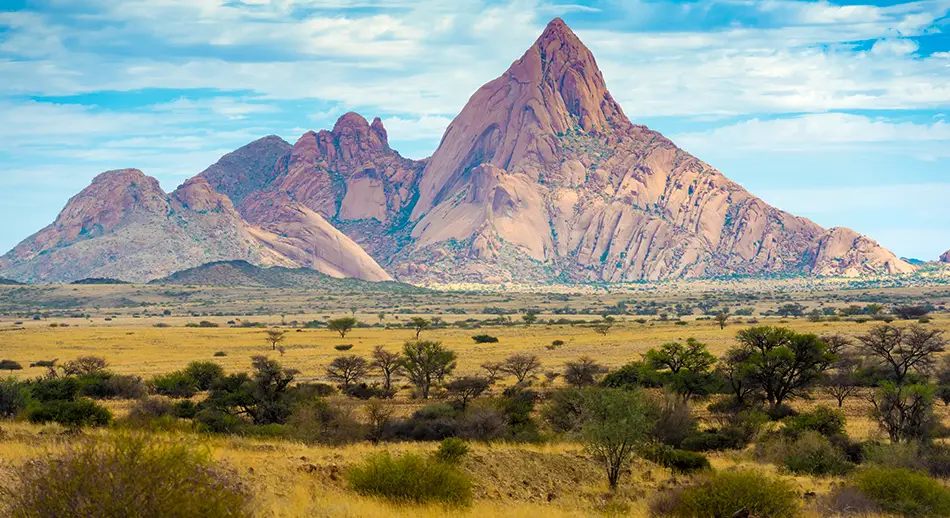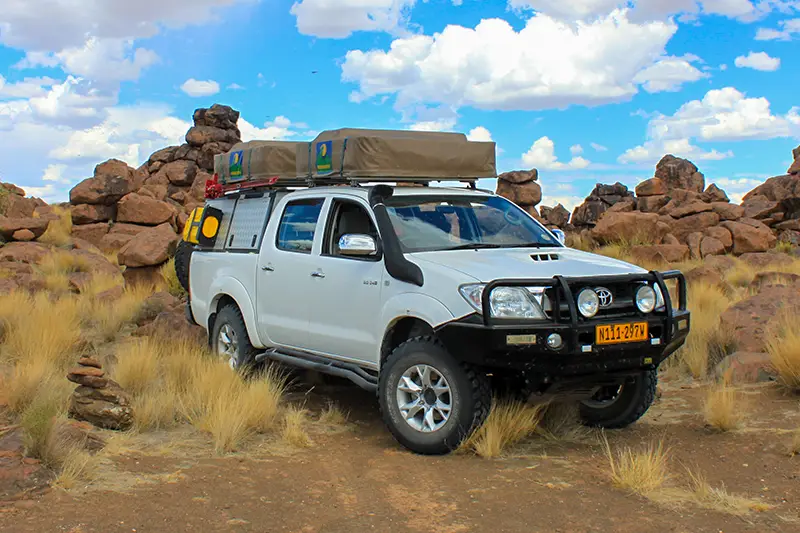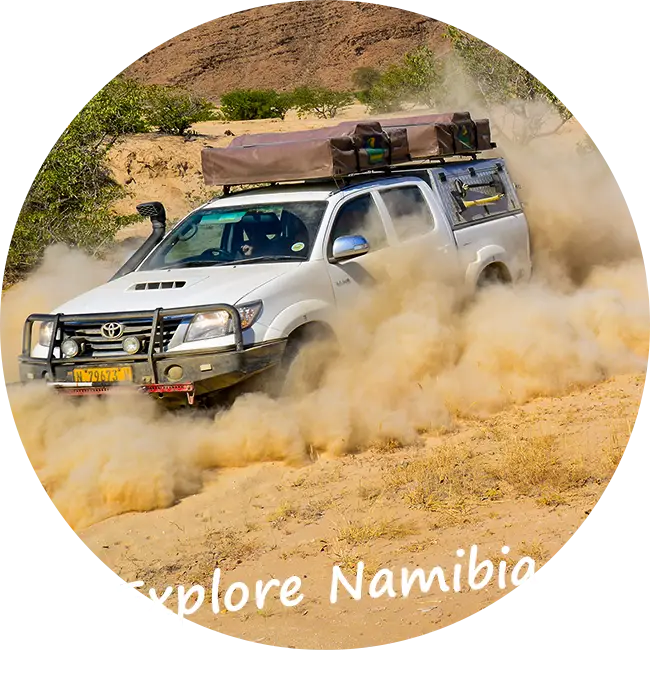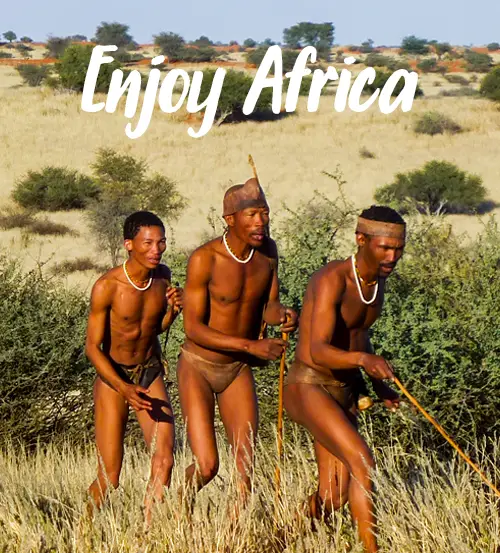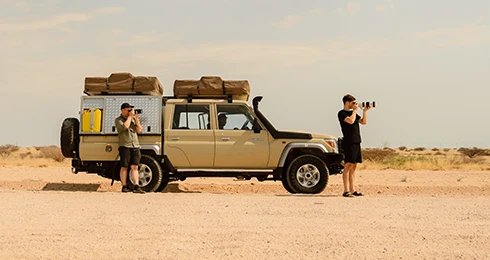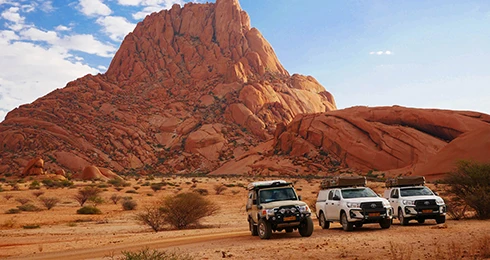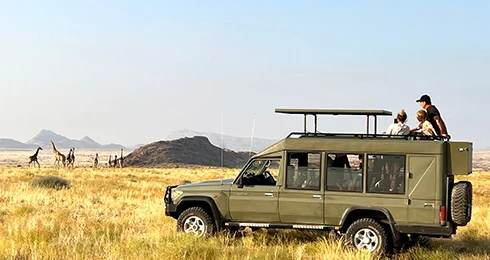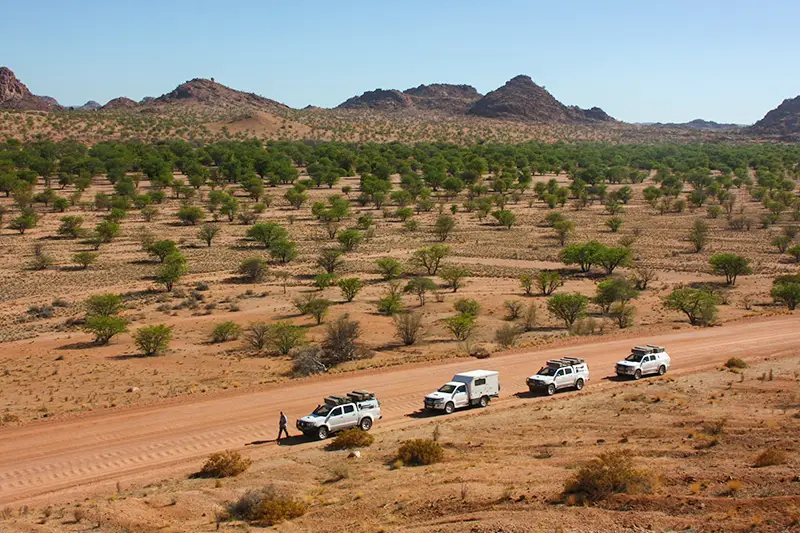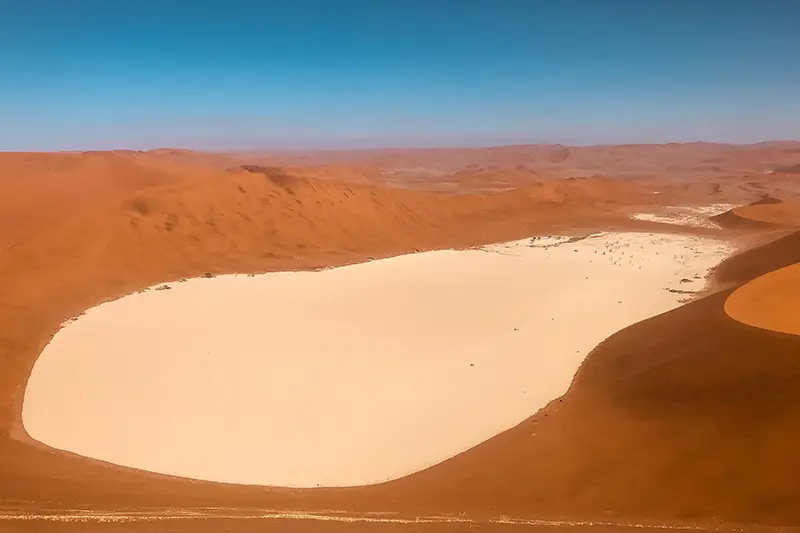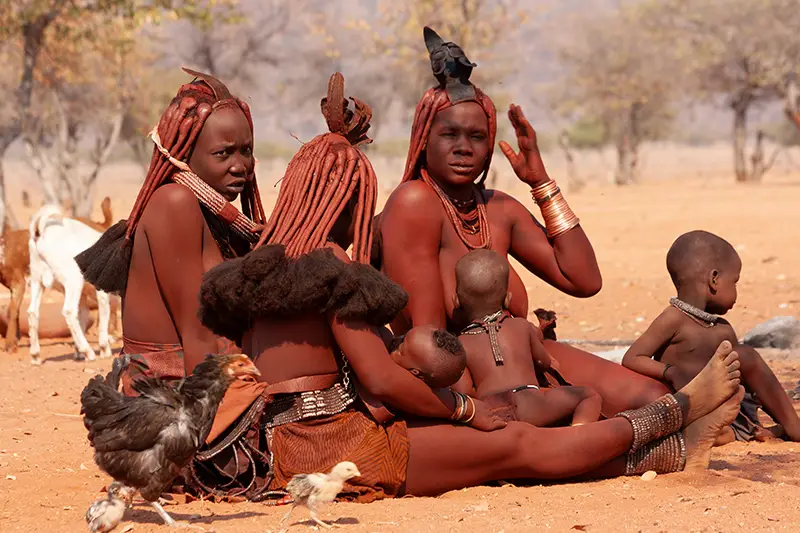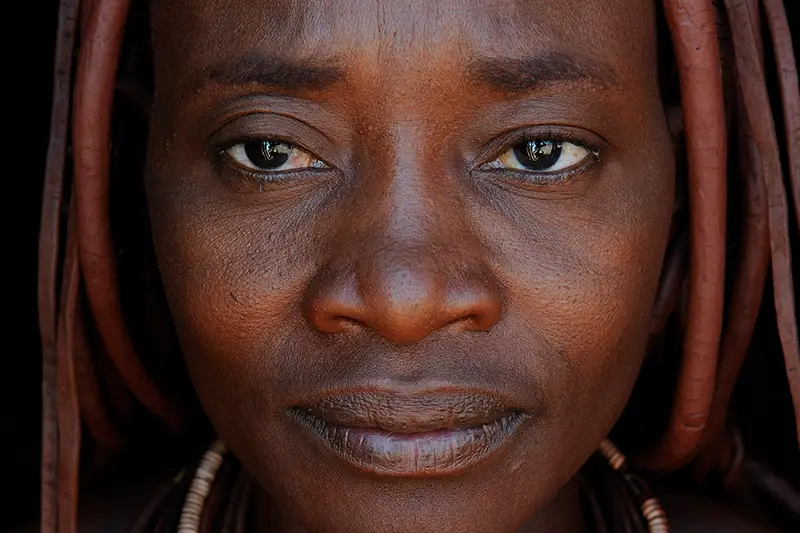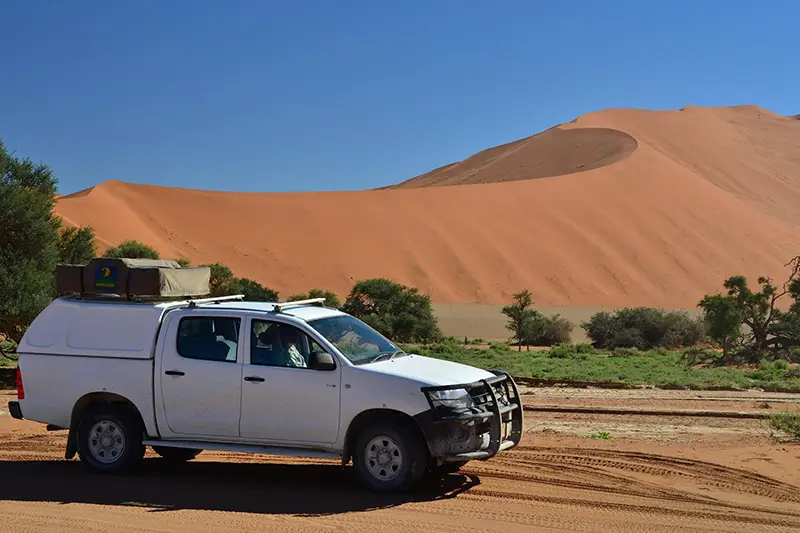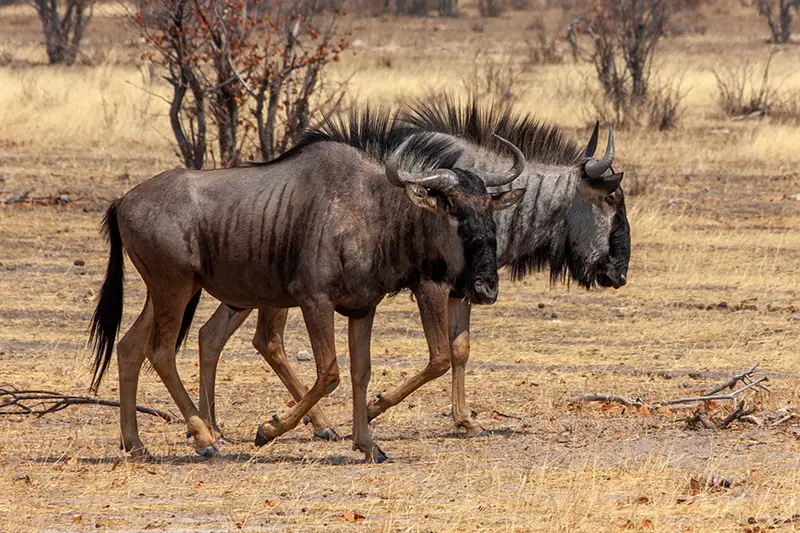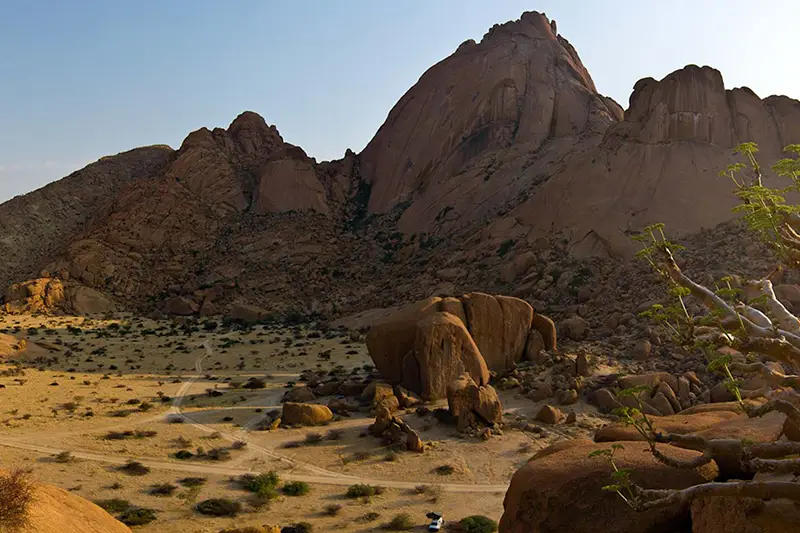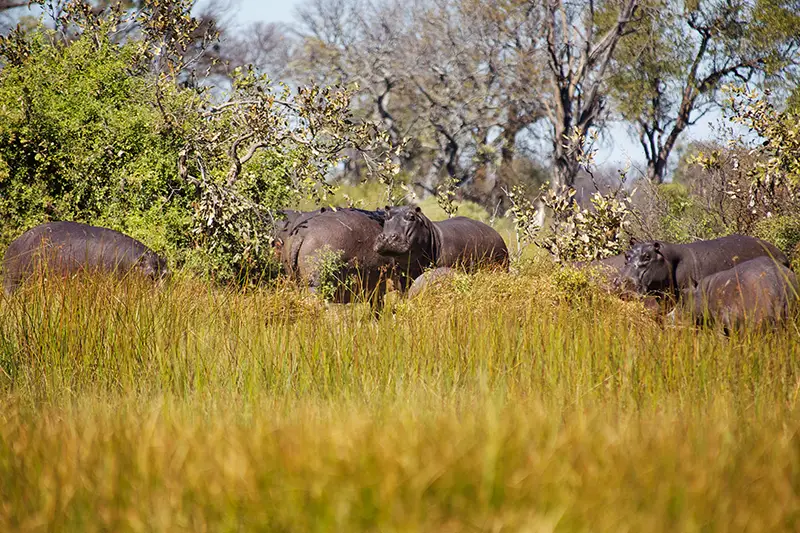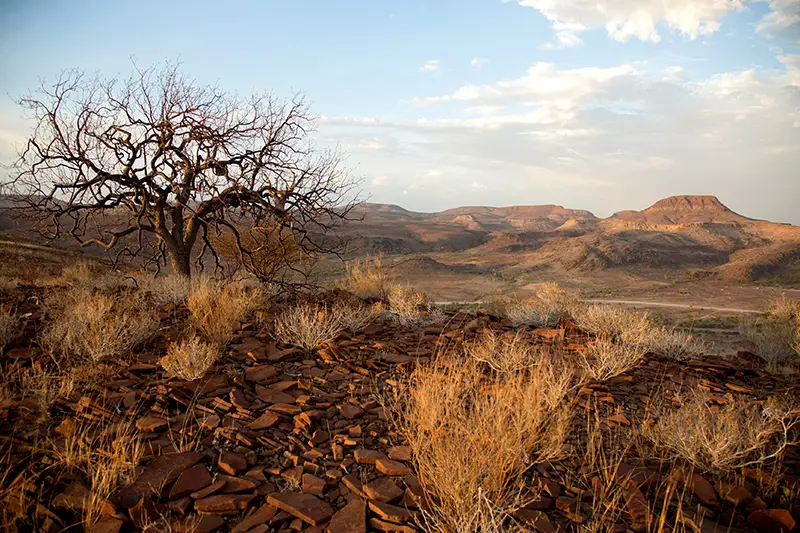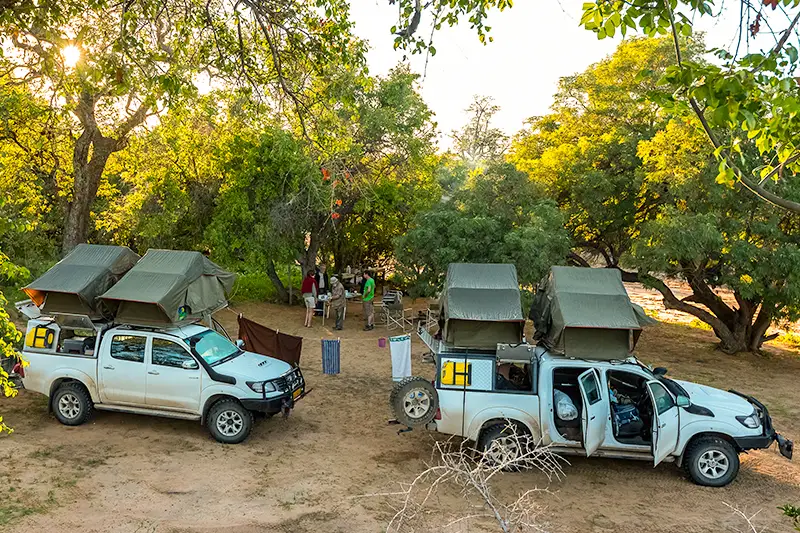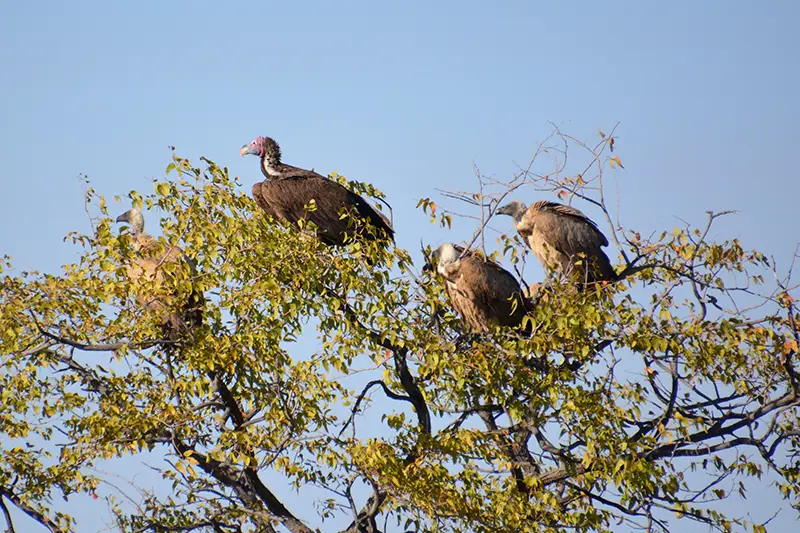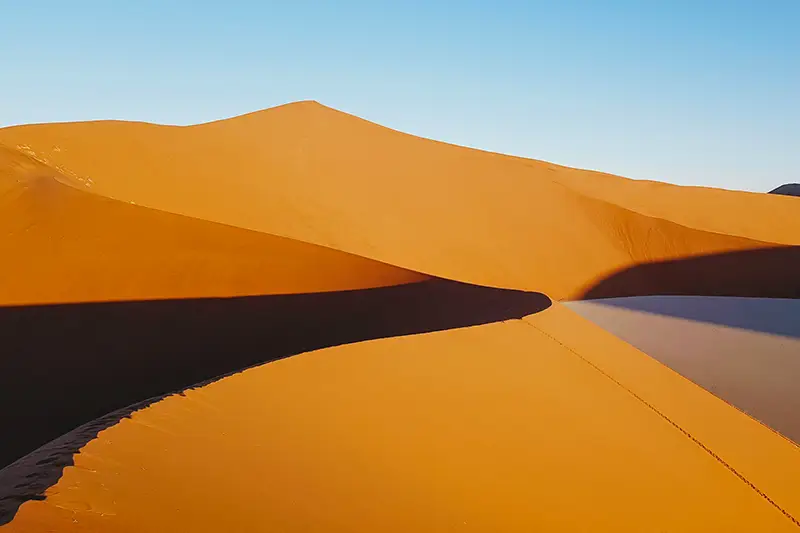INFORMATION ABOUT NAMIBIA
Discover essential information for your trip to Namibia. Read practical information about Namibia covering geography, history, population, economy, language, and the political landscape before you embark on your journey. This comprehensive info ensures you’re well-informed for a seamless and enjoyable travel experience in Namibia.
Explore Namibia: What you need to know about Namibia
A country of many different landscapes, from rusty colored dunes and vast gravel plains, to the waves of the Atlantic Ocean and the lush green oasis of the Zambezi region. It is also a country with a turbulent history that resulted in its contemporary cultural diversity. Get to know Namibia.
Geography
Namibia, covering a surface of 824,000 square kilometers, is about 20 times the size of The Netherlands, three times the size of the United Kingdom or two times the size of Germany. It is located south of the equator, where it borders Angola and Zambia in the north, Botswana in the east and South Africa in the south and south-east.
Its landscape is versatile and marked by several characteristic regions. A vast coastal desert, the Namib, stretches from north to south over a length of 1,500 kilometers. It is the oldest desert in the world, and its harsh conditions once were the reason that Namibia’s inlands remained undiscovered by explorers.
Contributing significantly to the country’s dry climate is the cold, nutrient-rich Benguela current coming from Antarctica – the reason you will find many fishermen along the coast – causing high pressures in the atmosphere and preventing rainfalls close to shore. However, Namibians still speak of a “living desert”: flora and fauna adapt in such a way that they can use the moisture of fog as a source of water.
Miraculous examples of this adaptation are the Welwitschia plant, a fossil plant with enormous leaves, and the fogstand beetle (also called a “Tok Tokkie”), which catches fog droplets on its hardened wings for survival. The Namib Desert is also the richest source of diamonds on earth, making Namibia the world’s largest producer of this valuable mineral.
Explore Namibia offers organised self-drive safaris and private guided tours. You can go on an adventure in a fully equipped vehicle of your own choice. We will arrange your accommodations in advance, whether you wish to stay in lodges and guesthouses, on campsites or both.
Itineraries
Self-drive Tours
We offer a wide range of self-drive safari tours, tailored to suit your individual needs and preferences.
Photographic Tours
Our photo tours are designed for photographers of all skill levels.
Safari in Convoy
You’ll drive in convoy with your own rental vehicle, following the leading vehicle.
Safari 'Stretched Landcruiser'
Safaris for max. 7 travelers in the spacious “stretched Landcruiser”.
History of Namibia
Until the arrival of Western hunters, missionaries and colonizers, Namibia was a relatively unknown country
Stories and history were only passed on through word of mouth for generations. Rock paintings and engravings of the San people, such as at Twyfelfontein; and remaining circles of stones of temporary settlements of the Khoi herdsmen, are therefore very important sources of information about ancient life in Namibia.
European encounters with Namibia remained at the coast for a long time, with the Portuguese as the first ones to explore this area – The Skeleton Coast in the 15th Century. The first successful inland expedition was when the English/Swedish Galton and Andersson reached Etosha Pan in 1851. It was only in the late 19th century, during the ‘Scramble for Africa’, that Namibia became a country of interest to European Colonial powers who were looking for resources and strategic locations in Africa.
German colony
After A. Lüderitz, a German trader, bought a coastal of land from a Nama headsman, he advised German counselor Bismarck to buy it from him in order to outpace the British from colonizing this land. This was the beginning of the German colony that became known as Deutsch Südwest Afrika from 1884 – 1915.
Ever since the late 18th Century, Nama and Herero tribes had been fighting over fertile land, resulting in serious conflicts with the interference of the better equipped ‘Witbooi-Namas’. However, the Germans occupied the most fertile land and resistance to German colonial rule came in 1903. This led to the ‘Battle of Waterberg’ in 1904 which triggered the annihilation decree by German military of the Herero people. An estimated 60,000 to 100,000 people perished during and after this battle which marked the beginning of Germany’s extermination campaign which continued until 1908.
Hendrik Witbooi, leader of the Nama, at that time refused to submit to German occupation and rallied his people to fight for their country. Still today, he is seen as a national hero. In 1915, after a fast defeat to the Union troops of South Africa, Germany surrendered the administration of Namibia to the South African Prime Minister Louis Botha.
Diamonds
The discovery of diamonds in Namibia led to great unrest once more. During the First World War, the Union of South Africa, dominion of Great Britain, gained control of this country as their “fifth province”. In 1948, Apartheid laws were introduced, resulting in the establishment of “Home Lands”. After years of fighting for independence, the SWAPO (South West African People’s Organisation) leads Namibia to independence on 21 March 1990 with it’s first democratically elected president, and ‘founding father’ Sam Nujoma.
Population
Twelve different tribes
Namibia has a population of 2,5 million people (2017 census), and is Africa’s least dense populated country. The population is a mix of many ethnic groups: today, at least twelve different tribes live in the country. The first inhabitants were the San, a tribe of Khoisan hunter-gatherers that have been living in Namibia at least as long as the modern calendar exists. A small number of San still live their nomadic lifestyle in the east of Namibia.
The Orange River in the South became home to the Nama (or Khoikhoi), Khoisan pastoralists, who now live across the whole southern part of Namibia. The Basters, today settled in Rehoboth, descend from Afrikaners and indigenous tribes which formerly resided in the Dutch Cape Colony. Central Namibia is inhabited by the Herero, who are sometimes dressed in Victorian style: a dress with many petticoats and a large hat, as a result of German missionaries that introduced contemporary European fashion. The more remote areas of the country are inhabited by the Himba and Damara.
Ethnic groups
The Himba distanced themselves from the Herero and continued their more traditional lifestyle. The Damara, also Khoisan people, are characterized by their matrilineal society. The largest ethnic group is that of the Ovambo, Bantu-speaking people from the north, whose roots also stretch into Angola. The Kavango people that live in the Zambezi region also have origin in this Bantu group. Because of their rural lifestyle, they settled in this region for its fertile grounds.
In more recent history, Namibia is also inhabited by a small population of Germans and Afrikaners. Despite their small number they have had great influence on the architecture of major towns. Especially the coastal town Swakopmund has many old buildings in ‘German style’.
Himba
The Himba still live a very traditional, nomadic lifestyle revolving around cattle. Cattle are a status symbol, a source of food and are used as dowry. Time seems to bypass these traditions but also the Himba cannot escape modernity completely: education, improved transport methods to towns, and also tourism have resulted in Himbas leaving traditional rural life.
Language - Time
Language
Almost ninety percent of the Namibian population is Christian. Many of them mix this religion with their traditional beliefs, which is characterized by ancestor worship. The official language of the country is English, although Afrikaans is also widely spoken.
Indigenous languages include Bantu languages (including Owambo, Kavango, Herero, Caprivi and Tswana) and Khoisan languages that are spoken by the Nama-Damara and San people, which are characterized by its click-sounds.
Time
From 2017 onwards, Namibia has abolished wintertime. Therefore, during European winter (end of October – end of March), Namibia’s clocks are one hour ahead; whereas in the European summer there will be no difference of central European time to Namibian time. Furthermore, consider that there are fixed opening and closing times at National Parks and borders, so make sure you leave, or rather arrive, on time. Remember that distances to cover are longer than you are used to, and you do not want to drive in the dark.
Flora and Fauna
Great Escarpment
East of the Namib lies the Great Escarpment, a chain of mountain-ranges that rise to 2,000 meters, and continue in a U-shape along the inlands of the southern part of the African continent. In South Africa, a well-known part of this escarpment are the ‘Drakensbergen’. In Namibia, parts of the Escarpment are the Khomas Highland, the Gamsberg, the Naukluft Mountains and the Tiras Mountains.
On the eastside of the escarpment are the Central Highlands, forming the largest part of Namibia and covering the center of the country. The city of Windhoek is located here at about 1,700 meters above sea level. To the east of the highlands lies the Kalahari desert which, although technically a desert, gets moisture from a subterranean wealth of water and is therefore overgrown with acacia trees.
Like in most parts of Namibia, these water sources are ephemeral rivers that will only flow when the source of the river is fed with rainwater. Both, animals and people make use these water reserves by digging in the dry riverbeds for water.
Zambezi – Caprivi strip
The Zambezi region, better known as the Caprivi strip, forms a stark contrast to the rest of the country. The lush green landscape is a result of the Kavango River which runs from Angola to the Okavango Delta in Botswana, and is also called the “life blood” of the region. Here, wildlife can be found, that does not dwell elsewhere in Namibia, such as crocodiles, hippos, buffalos and sable antelopes.
Economy and Politics
Namibia is a Republic
Since independence, focus has been on reconciliation efforts of the different ethnic groups. Unlike in many other African countries, large-scale reform programs and nationalizing of industries were put off.
This way, capital and knowledge remained in the country and could stimulate the economy. However, the average income is very unequally spread over the population and poverty and unemployment are still major problems in Namibia.
Even though it is a relatively small contribution to the national economy, the largest part of the population works in the agricultural sector, which mostly takes place in the fertile north. Here, millet, legumes and corn are the main crops. Another common form of agriculture is extensive cattle breeding, despite the suffering the droughts bring along.
Environmental protection
Meat is exported to South Africa and Europe. However, as cattle attract carnivores such as leopards and cheetahs, human-wildlife conflicts occur and pose a threat to nature conservation. Several wildlife sanctuaries, such as the AfriCat Foundation, try to raise awareness amongst farmers in order to prevent these animals from extinction.
Namibia was the first country to include environmental protection in the constitution. Its conservancy approach has been internationally acknowledged, as it assisted rapid growth of wildlife populations. Wildlife and other natural resources within certain areas are managed by local communities. Instead of seeing wildlife as a threat, people are motivated to protect animals as this benefits the country economically through sustainability and tourism.
Mining sector
The cold Benguela Current of the Atlantic Ocean forms an important source for the fishing industry. Once Walvis Bay became part of Namibia (again), this sector gained more traction. But the major contributor to the economy is the mining sector contributing to 75% of all the country’s exports. Near Swakopmund, the world’s largest uranium mine is located and a large part of the Namib Desert is a diamond-rich, inaccessible area, co-owned by the Namdeb Diamond Corporation and the Namibian government.
Since independence in 1990, Namibia has become a popular tourism destination, especially for its national parks and wildlife. Investments into infrastructure also made the remote areas, like Fish River Canyon in the south and Kaokoland in the north, accessible for tourists. In 2015, Namibia had 1.5 million foreign arrivals and tourism contributed 15.4% to GDP.
Mobile connection
SIM cards & mobile operators
In the more populated areas you will usually have cell phone reception with your foreign SIM-card, but when driving through Namibia this will often not be the case. If you want to be reachable, buy a Namibian ‘pre-paid’ SIM-card. Most accommodations also have (free) Wi-Fi.
Electricity
Standard voltage 220/240V
The voltage in Namibia is 220/240V. You will need a three-pin plug or adaptor, which can be found in every supermarket. A European multi-plug comes in handy if you want to charge more than one device at the same time. Although power failures are unusual, a flashlight or headlamp is very useful at night.
Namibia Tailor-made Travel Advice
Every traveller has their own preferences. Do you need assistance in planning your self-drive trip to Namibia? Our experienced tour consultants are ready to assist you! Together we fully customize the tour to your personal preferences, wishes and budget. We can assist you in many different ways. Our team of friendly and service-oriented Tour Consultants is available in Europe and Africa to assist you in creating a personalized proposal for your tailor-made trip to Namibia and to answer all your questions you might have.
Namibia Tailor-made Travel Advice
Every traveller has their own preferences. Do you need assistance in planning your self-drive trip to Namibia? Our experienced tour consultants are ready to assist you! Together we fully customize the tour to your personal preferences, wishes and budget. We can assist you in many different ways. Our team of friendly and service-oriented Tour Consultants is available in Europe and Africa to assist you in creating a personalized proposal for your tailor-made trip to Namibia and to answer all your questions you might have.
Explore one of the most fascinating and diverse countries in the world
Other Favourite Routes to Inspire
The itineraries we offer are fully customizable to your needs. You can book these, or you can use them for inspiration to build your own, tailor-made adventure. See below some of our other sample itineraries that we have put together. Explore Namibia will always make sure that you will experience the journey of your dreams!
Length: from 9 Days (customizable)
Price from: €633,- EUR
Length: from 12 Days
Price from: €4.299,- EUR
Length: Customizable
Price from: €1089,- EUR
Length: 13 Days
Price from: €3.999,- EUR
